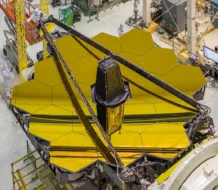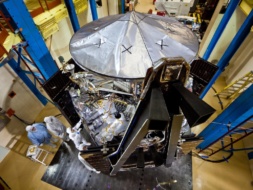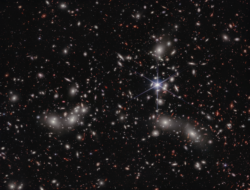Humans have been mapping the cosmos since the dawn of civilization, but modern technology has allowed scientists to build an entirely new kind of universal chart.
An international team of researchers has published a map of the universe’s quasars in The Astrophysical Journal. The new map, dubbed Quaia, spans a greater region of the universe than any created before, and includes the location of ~1.3M individual quasars using data from ESA’s Gaia space telescope.
“Researchers around the world are using the quasar map to measure everything from the initial density fluctuations that seeded the cosmic web to the distribution of cosmic voids to the motion of our solar system through the universe,” Kate Storey-Fisher, lead author of the paper and postdoc researcher at the Donostia International Physics Center in Spain, said in a release.
Quasar science: The quasars dotted throughout the universe are both A) supermassive black holes and B) incredibly bright. They sit at the centers of galaxies and are surrounded by clouds of gas that spiral inwards, picking up speed with the incredible force of the black hole’s gravity. This speeding-up produces a lot of heat and light.
Map it bigger: Quaia is not the largest catalog of quasars ever produced by sheer number of objects, but in terms of how much of the universe’s volume accounted for, it takes the cake. The comprehensive dataset is particularly useful for understanding dark matter—where it is, how it’s distributed, and how it behaves.
- Quasars themselves sit within host galaxies surrounded by halos of dark matter, and mapping quasars helps to map the web of dark matter between them.
- The light from quasars is also stretched as it travels through that vast expanse of dark matter and as the universe expands.
- These complementary observations are pieces of the puzzle, helping scientists uncover the mechanics of the universe’s expansion.




